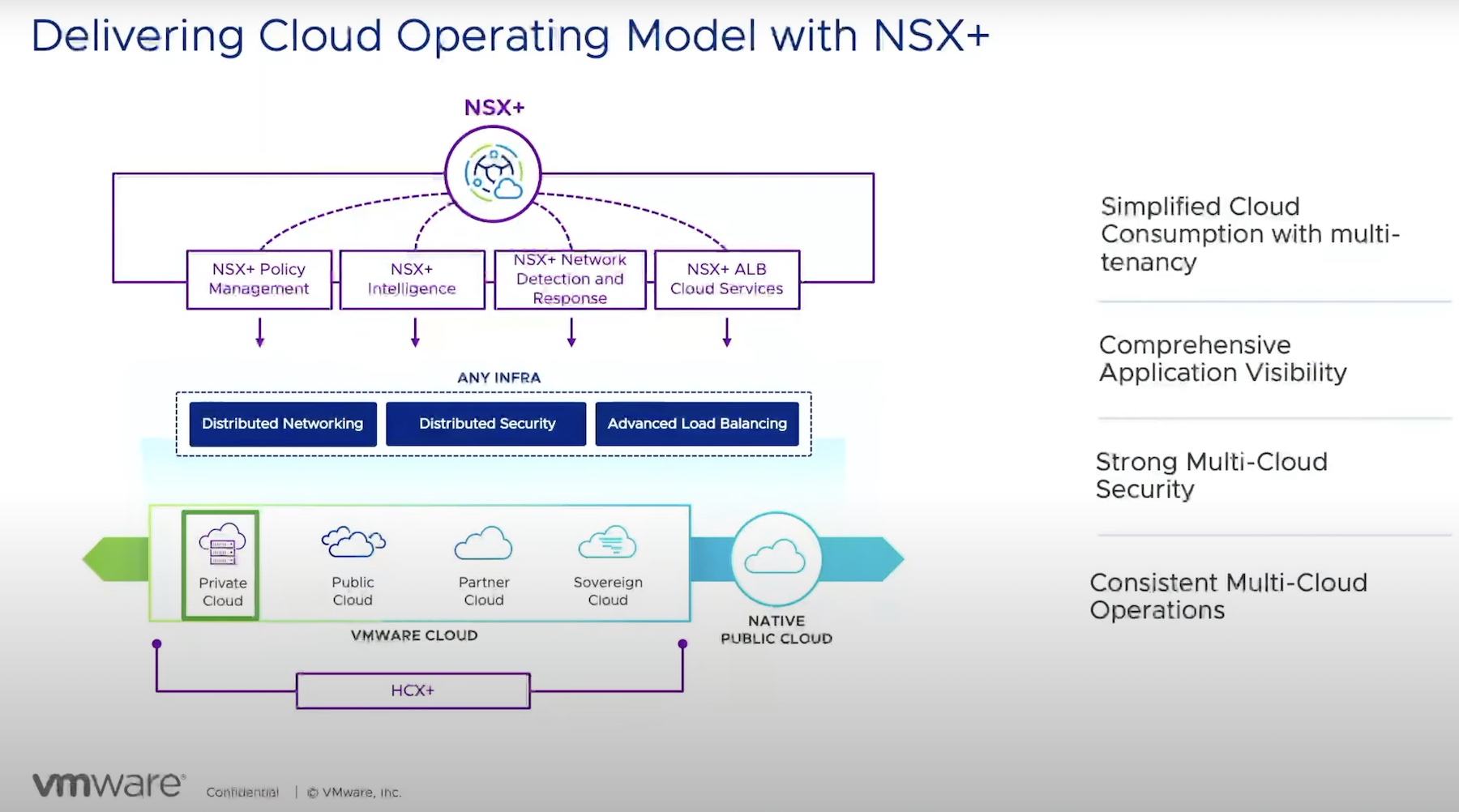As companies expand their digital footprints, many have fallen on multi-cloud as their go-to strategy. Multi-cloud has opened doors for companies to explore more options, and acquire competitive pricing between cloud service providers, whilst enjoying the best-of-cloud amenities.
Although a winning strategy, multi-cloud is not easy to tap into. It takes training and bandwidth, and even the most well-funded and motivated organizations face surprising standstills along the way. The reason being that multi-cloud migration is fraught with skill gaps, lack of organization, and an ever-widening knowledge gap as more and more cloud vendors pop into the scene.
At the recent Tech Field Day Extra at VMware Explore US 2023, VMware launched a new solution that is designed to iron out of these kinks and unlock a rapid and persistent transition to multi-cloud.
What Does Multi-Cloud Look Like from the Inside?
“Multi-cloud is no longer aspirational. It has become a reality. Companies are growing their workloads in their on-premise datacenters, as well as in third-party cloud-managed locations, in native public clouds and retail edge sites,” commented Pooja Patel, Sr. Director of Technical Product Management of NSX, VMware’s flagship network virtualization and security solution.
One of the biggest pains of multi-cloud is lack of standardization. On multi-cloud, every platform has its own set of bespoke capabilities. This causes policy and operations to be fragmented, security controls to be inconsistent, and migration, a nightmare.
These are more than just early inconveniences. Studies have found IT silos to be at the root of operational complexities and security breaches. Companies need to operate off the assumption that these gaps will create significant headwinds in a matter of time.
“When we talk to customers, they’re looking for an easy way to see what is going on in their network, visualize how the security policies are configured, the way flows are going across different clouds, and all this is only possible if you have a common cloud operating model, a product or an offering that provides a single pane of glass to connect, observe and secure all these different silos,” said Patel.
NSX+ is designed in the likeness of this. Building upon the capabilities of NSX, NSX+ brings to offer consistent multi-cloud networking and security delivered as a service. The result is easy multi-cloud consumption through comprehensive cross-cloud visibility, multi-tenancy, persistent security, and most importantly, centralized operations.
NSX+ is VMware’s foray into SaaS-based cloud managed services for the NSX networking and security portfolio, said Patel. “What we are trying to do is help our customers achieve multi-cloud network and security standardization as they go on this journey.”
Multi-Cloud Standardization with NSX+
NSX+ brings to the table five key capabilities, aiming to provide one cloud operating model for maximum multi-cloud resiliency, starting with NSX+ policy management.
NSX+ policy management provides a common policy framework to manage multiple NSX locations. Repeatable network designs, centralized policy management and consistent operations are delivered from a single console, ensuring speedy deployment of network across cloud platforms. Users can manage policy configuration of things like distributed firewall, gateway firewall and distributed intrusion detection and prevention service (IDS/IPS), centrally from the console. Built-in network operations inside the console allows operators to see and search cross-site alarms, and perform lifecycle management tasks like upgrading and licensing.

A feature Patel highlighted is multi-tenancy which allows NSX+ users to define tenants spanning multiple NSX sites. “NSX has traditionally provided some form of multi-tenancy, but we did not have true object-level multi-tenancy in the past. With the NSX 4.x release, we have the ability to define multiple tenants, and delegate those tenants to different lines of businesses.”
This is complemented by NSX+ Intelligence, a service that provides visibility into cross-cloud traffic, on-demand access to security management and analytics, and policy recommendations. By offloading overheads and complexities from security operations, this makes it easier to plan and implement security policies.
The visibility is topped with NSX+’s Network Detection and Response (NDR). A threat prevention service, NSX+ NDR threshes intelligence from massive amounts of network data – mapping anomalies and correlating events – providing security teams visibility into attack chains and anomalies, and helping triage threats based on the MITRE ATT&CK framework.
NSX+ ALB (Advanced Load Balancing) Controller Cloud Services reduce complexities in Day 0 to Day 2 operations by mapping applications to infrastructure and simplifying tasks like configuration, upgrades, autoscaling and DR.
The last service on the list is HCX+ which is an application mobility solution offering a set of capabilities that allows transparent migration of workloads across cloud locations.
Wrapping Up
There is one rule that is always safe to play by in IT – keep adapting to the changes, and right now, the biggest change happening is the transition to multi-cloud. VMware NSX+ with its latest features, opens up a direct ramp to multi-cloud, free of complexity and chaos. NSX+ bypasses the passive approach of managing silos which is limiting, and frankly no-longer sufficient. To keep the digital transformation going uneventfully, supporting technologies need to evolve in advance to meet customers’ changing requirements, and VMware is champion for that. With NSX+, it provides a complete solution that gives organizations the tools, the strategy and ultimately, the skill to embrace multi-cloud in a clean and consistent fashion.
Be sure to watch the full presentation for a demo of NSX+. For more interesting presentations from VMware, be sure to check out Tech Field Day Extra at VMware Explore US 2023 at Techfieldday.com.

